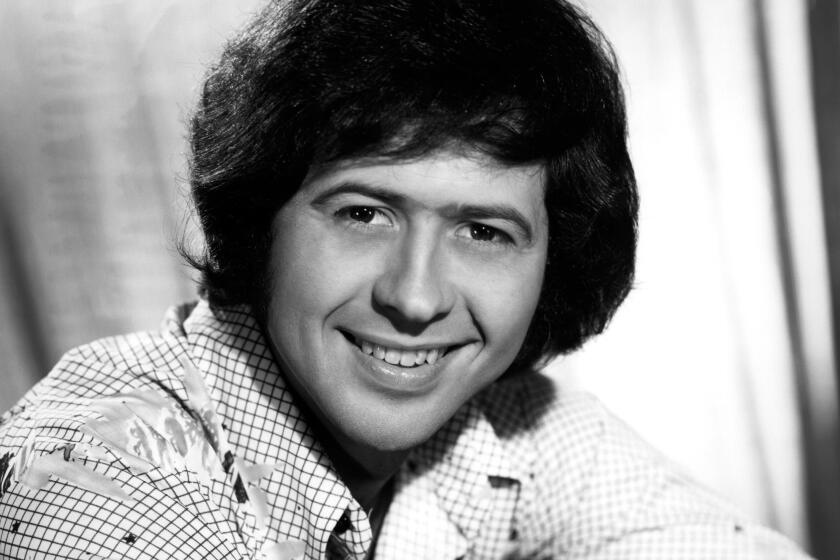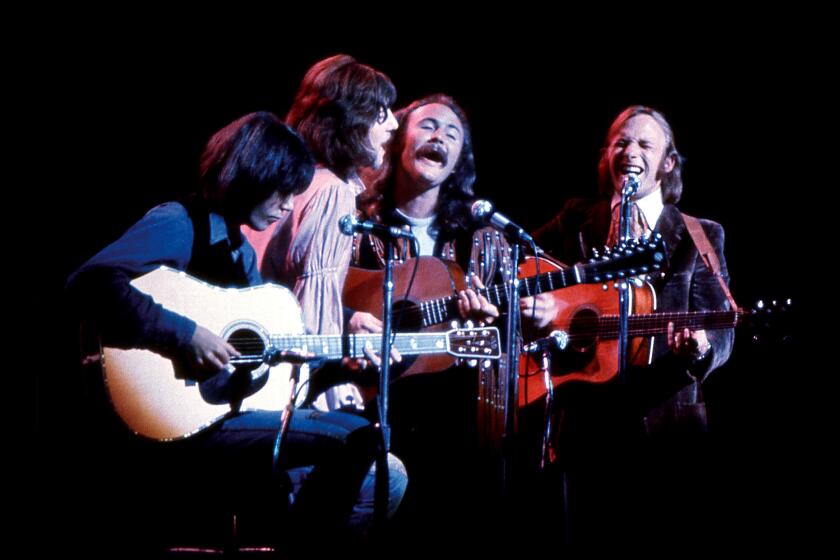Critic’s Notebook: Coachella moves to the beat of digital youth
- Share via
INDIO — As a giant impenetrable scrum of attendees waited for New Zealand singer Lorde, 17, to take the Outdoor stage at the Coachella Valley Music and Arts Festival. Nearby, MGMT played the main stage, and the chorus of its song “The Youth” gusted in toward Lorde’s crowd like a portent.
“The youth is starting to change,” offered singer Andrew VanWyngarden as the band’s psychedelic disco slow jam drifted in. “Are you starting to change? Are you, together?”
A few minutes later, as if conjured by MGMT’s query, arrived Lorde. Dressed in white and seeming every bit a future figurehead, she took the stage just after the distant song had arrived at its ethereal ending mantra: “the youth … the youth … the youth.” It felt like a clarion call.
PHOTOS: Coachella Day 1 | Day 2 | Day 3
Call it coincidence or a mystical accident of fate, but that moment on Saturday seemed to capture this year’s festival for me: a musical event firmly listing away from past glory and toward a synthesized future.
She wasn’t the only teenage upstart. Throughout the festival a host of budding could-be giants hit the Coachella pitch.
They drew big turnouts and/or buzz, further tilting the weekend toward a beat-based, digitized present in which any act without at least a little electronic keyboard may as well be a Mississippi jug band. The result felt like a tipping-point year, one in which even Pharrell and Nelly’s version of “Hot in Herre” was dusty (in more ways than one).
Lorde’s take on her “Tennis Court” served to underline the shift: “Pretty soon I’ll be getting on my first plane,” she sang in a song written when she was in her midteens and unaware of the accrued frequent flier miles of her future.
On the other end of life’s continuum, Paul Westerberg of the Replacements, reuniting to great pre-fest fanfare but greeted with relative indifference and tiny turnout, underlined the point. In an out-of-touch-grandpa moment, he said tartly between songs, “I’m looking for a girl who’s never used the word ‘awesome.’” Wrong place, wrong era, pal. Few cared to sing along to “Androgynous” here (even if they should).
Such scant turnout was also evident at sets by similar Gen X-ish legacy acts — Neko Case, Jon Spencer Blues Explosion, Bryan Ferry — all struggled to gather enough eardrums to rise above the noise. One exception, the Pixies, had the Mojave tent bursting.
The youth-in-revolt vibe was dense in the massive Sahara tent. On Friday during Zedd’s electronic beat set, his all-consuming light show strobed in sync with the his razor rhythms. Ditto Empire of the Sun and the Glitch Mob, two over-the-top EDM acts more influenced by Blue Man Group’s brand of theatrics than Ferry’s. Both were a vision of a Philip K. Dick futureworld, like “Blade Runner” in the desert.
On Sunday afternoon, 20-year-old Chicago breakout artist Chance the Rapper worked it like a headliner, a position that he’ll be chasing for the next few years. Performing songs from his excellent mix tape “Acid Rap,” the artist born Chancellor Bennett danced, sang, rapped and celebrated. When superstar Justin Bieber took the stage to offer a cosign, those who weren’t screaming with joy were pounding nails into Coachella’s coffin.
Another teen team, Carbon Airways, are French siblings whose Coachella debut was the stuff of dreams: gigging the Sahara to a few thousand new fans of their hard electro-pop. Open to the offerings of their peers but not grumps with guitars, these fans seemed utterly uninterested in their parents’ music happening elsewhere.
PHOTOS: The past headliners at Coachella
The great unifiers in all of this weren’t said dudes — even if one of my favorite moments was Highland Park rocker Ty Segall’s cover of Motörhead’s proto-metal jam “Motörhead.” Rather, they were the rappers and hip-hop producers entering midcareer: Outkast, Nas and Pharrell Williams, all of whom offered headlining sets to wildly enthusiastic response.
Visually imaginative, well-paced (with a few lulls) and filled the adrenaline of rebirth, Outkast offered 90 minutes of bouncy hip-hop glory, proving that, indeed, absence begets fondness. By the time Big Boi opened his pearl of a song, “The Way You Move,” the masses were reminiscing and dancing.
Notably, one of the fest’s biggest moment’s — the return of Outkast’s Andre 3000 and Big Boi — was polarizing among its fans, mostly because of the perceived indifference of Andre “3000” Benjamin. He performed the first verse his biggest hit, “Hey Ya!,” with his back to the crowd in what seemed a deliberate brushoff. The move prompted deserved concern that the duo’s long summer of touring might pose challenges. But it didn’t diminish the music one bit.
More outwardly grateful to be onstage was young band Unlocking the Truth, making its festival debut on Friday afternoon. “Young” is an understatement. The Brooklyn band’s members are all still in junior high school, but it didn’t show. Playing a hard, distorted blend of metal and speed punk on the main stage, they were as well practiced as units three times their age — and defiantly off-message among their young peers delivering beats.
PHOTOS: Quotes from the performers
By the end of their set the small but vocal crowd were so impressed that they started chanting, “one more song!” But if Outkast couldn’t do one more, neither could Unlocking the Truth.
That didn’t stop the band members from wandering out toward the fans. One by one they were lifted into the air by a mass of hands. Members Jarad Dawkins, Malcolm Brickhouse and Alec Atkins were carried Jesus-like above the crowd, surfing their way to the back to cheers, high-fives and handshakes.
It felt like glimpse into a crystal ball, as if these adolescents and the others were offering a time-traveled glimpse of Coachella’s future, the grown-up and graying be damned.
More to Read
The biggest entertainment stories
Get our big stories about Hollywood, film, television, music, arts, culture and more right in your inbox as soon as they publish.
You may occasionally receive promotional content from the Los Angeles Times.










